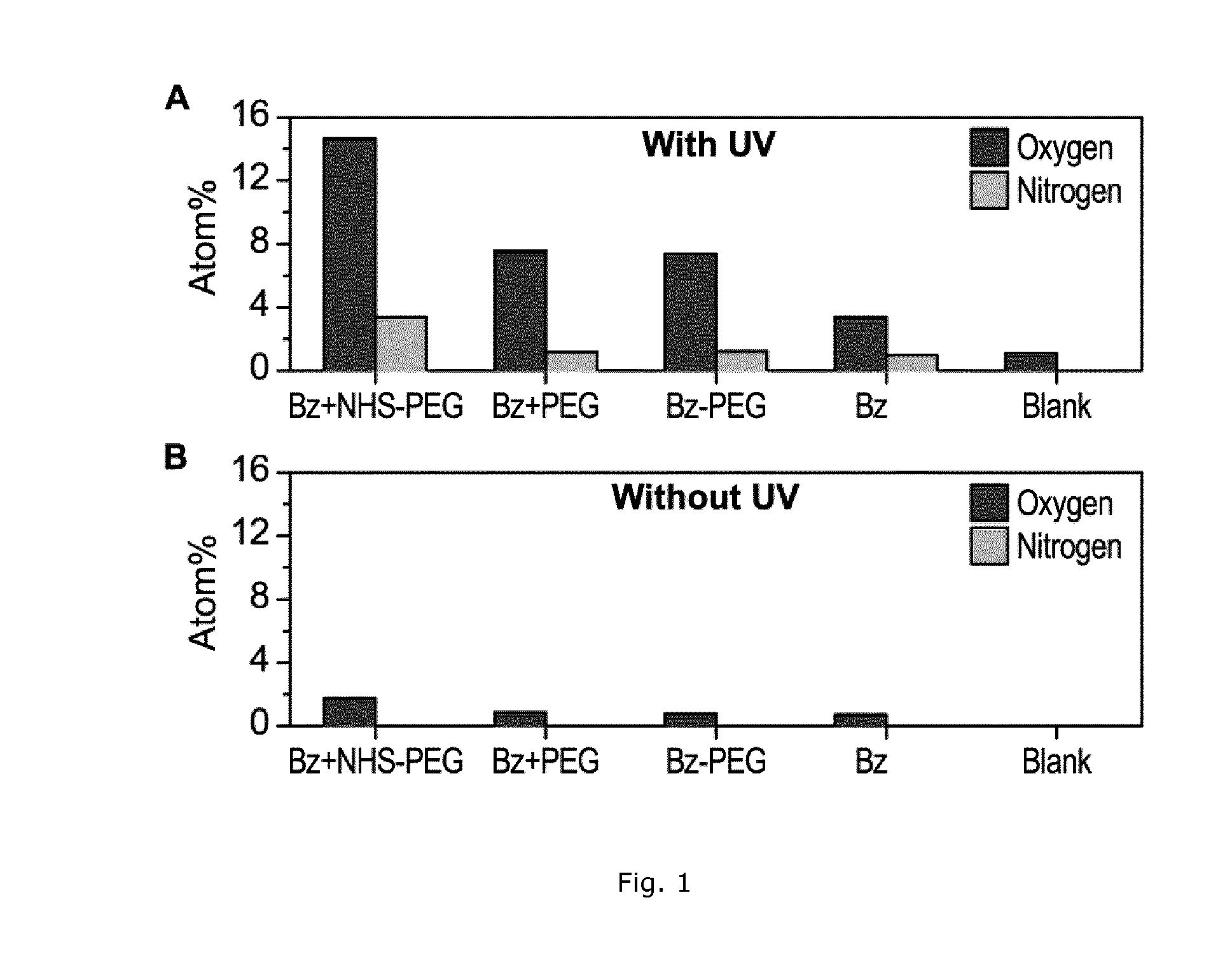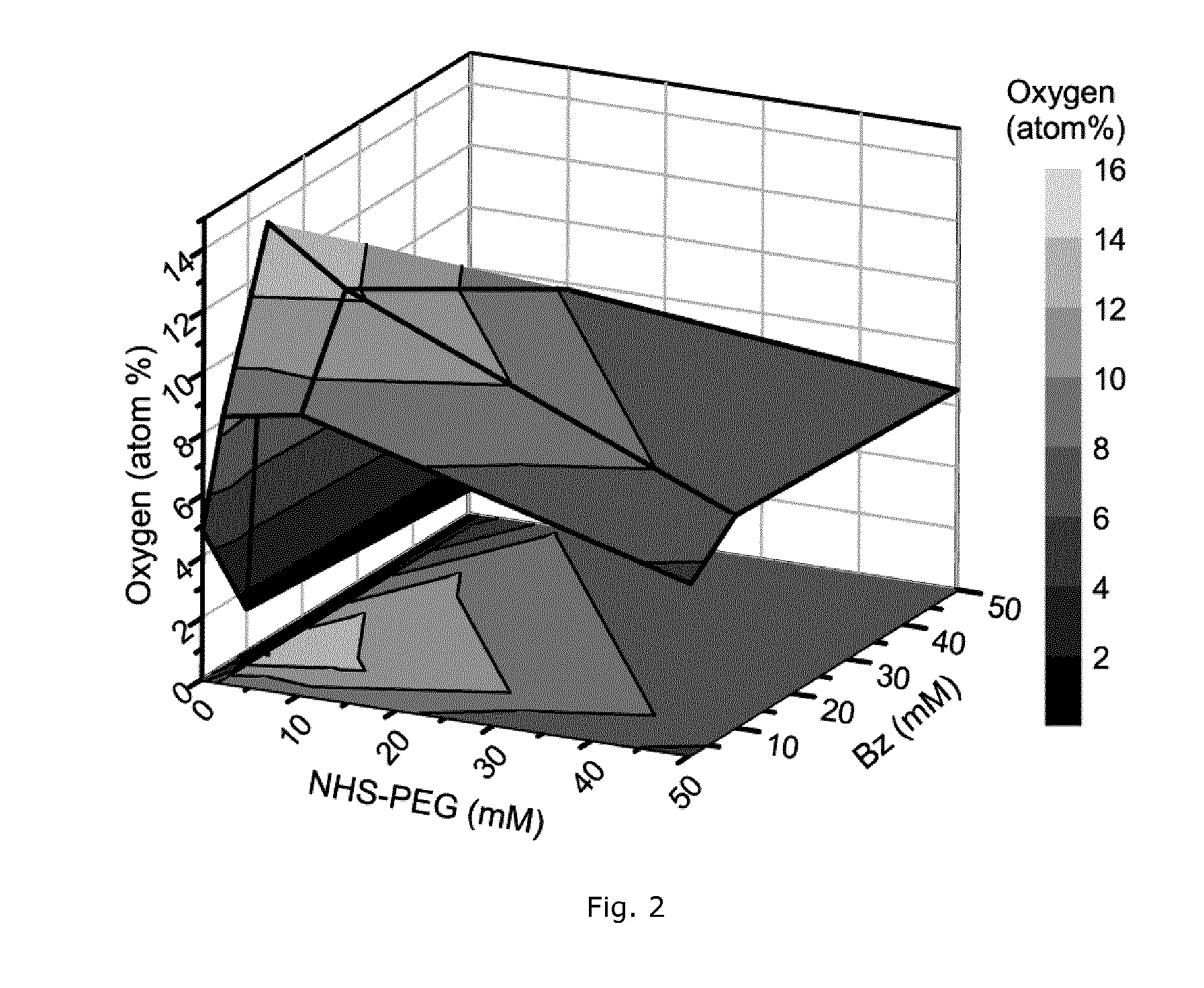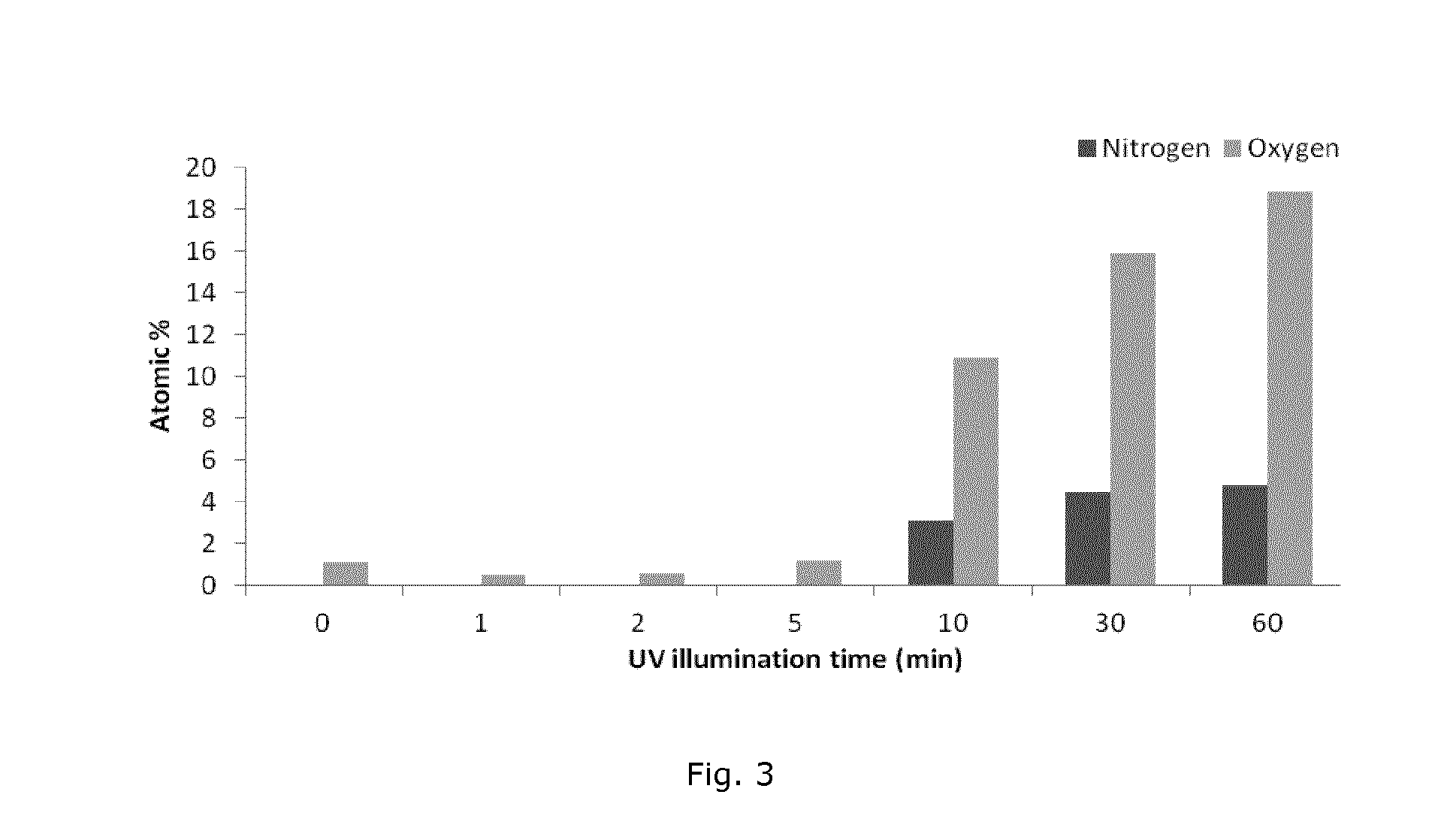Method for applying a coating to a polymeric substrate
a polymeric substrate and coating technology, applied in the direction of liquid surface applicators, polyether coatings, coatings, etc., can solve the problems of grossly incorrect analysis, significant underestimation of the potency of drugs in detection systems, and the reduction of the concentration of analytes in the solution, so as to achieve efficient inhibition of the adsorption of analytes and simple and reliable methods
- Summary
- Abstract
- Description
- Claims
- Application Information
AI Technical Summary
Benefits of technology
Problems solved by technology
Method used
Image
Examples
preparation example 1
[0080]Conjugation of NHS-PEG to Benzophenone
[0081]Bz-PEG was synthesized by adding NHS-PEG (126 mg, 151 μmol), Bz (35 mg, 141 μmol) and EDC-HCl (138 mg, 720 μmol) 60 to 0.5 ml PBS and reacting for 24 hours at room temperature. The product were purified by HPLC using a 5 μm diol column with 6 nm pore size and using a running buffer (1 mL / min) of 50% MeOH / 50% H2O with 50 mM NaCl. The purified product was collected and solvent evaporated, before dissolving in 1 mL H2O. The concentration of Bz-PEG was determined from a 1 μL sample dissolved in 99 μL H2O and injected onto the HPLC.
example 1
[0082]Surface coating was performed in a one-step process where benzophenone amine (Bz) and NHS-PEG (750 Da) in PBS was added to different polymer surfaces before UV light illumination (Scheme 1; labelled “Bz+NHS-PEG” in the figures).
[0083]The significance of coupling via the activated NHS ester group was investigated in a separate set of experiments using Bz and an equally sized PEG without a terminal NHS ester (labelled “Bz+PEG” in the figures). A two-step method was also explored where Bz and NHS-PEG are first covalently coupled via an amide link to form Bz-PEG. The Bz-PEG product was purified by HPLC and then added to the different polymer surfaces before UV light illumination (labelled “Bz-PEG”). Surface coating by both methods have the advantage of being performed in an aqueous buffer instead of the usually used organic solvent, which can react with the photoactivated benzophenone. Moreover the actual photoactivated coating is performed in a single step. The results labelled “...
example 2
[0084]The influence of the Bz and NHS-PEG concentrations on the degree of reaction was examined by varying the two concentrations from 0 to 50 mM with UV illumination for 30 minutes (FIG. 2). A maximum oxygen concentration of 14 atom % was measured on the sample treated with 10 mM Bz and 2 Mm NHS-PEG.
PUM
| Property | Measurement | Unit |
|---|---|---|
| wavelength range | aaaaa | aaaaa |
| time | aaaaa | aaaaa |
| solubility | aaaaa | aaaaa |
Abstract
Description
Claims
Application Information
 Login to View More
Login to View More - R&D
- Intellectual Property
- Life Sciences
- Materials
- Tech Scout
- Unparalleled Data Quality
- Higher Quality Content
- 60% Fewer Hallucinations
Browse by: Latest US Patents, China's latest patents, Technical Efficacy Thesaurus, Application Domain, Technology Topic, Popular Technical Reports.
© 2025 PatSnap. All rights reserved.Legal|Privacy policy|Modern Slavery Act Transparency Statement|Sitemap|About US| Contact US: help@patsnap.com



